Being immersed in the fitness industry provides me with a ton of different opportunities to experience different techniques, methodologies, and products. I recently had the privilege of a...
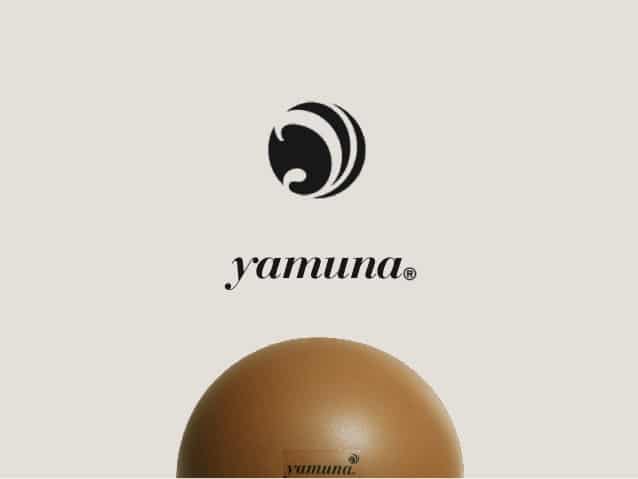

Being immersed in the fitness industry provides me with a ton of different opportunities to experience different techniques, methodologies, and products. I recently had the privilege of a...
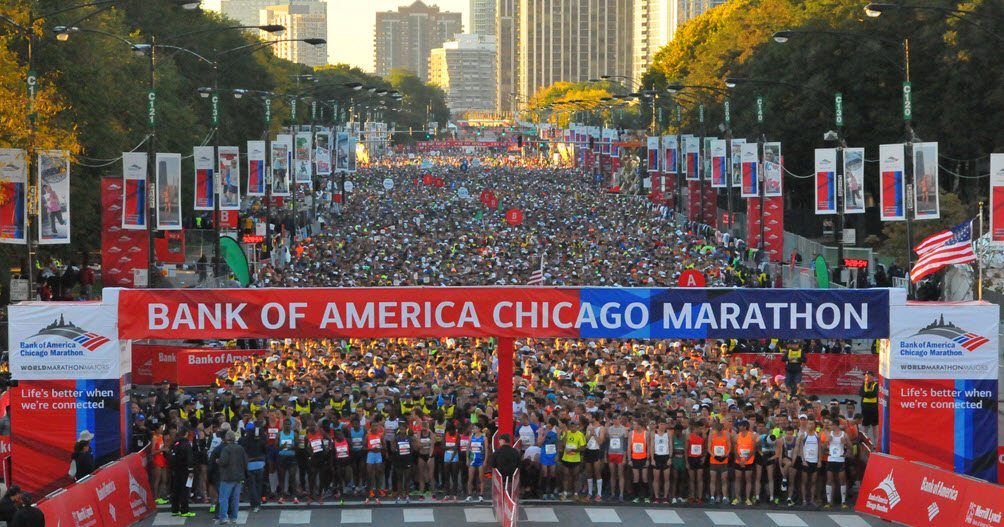
Leading up to the Chicago Marathon 2016 The Chicago Marathon provides an excellent course, plenty of support and, for me, a chance to visit home for a few days. It was no different for me this...
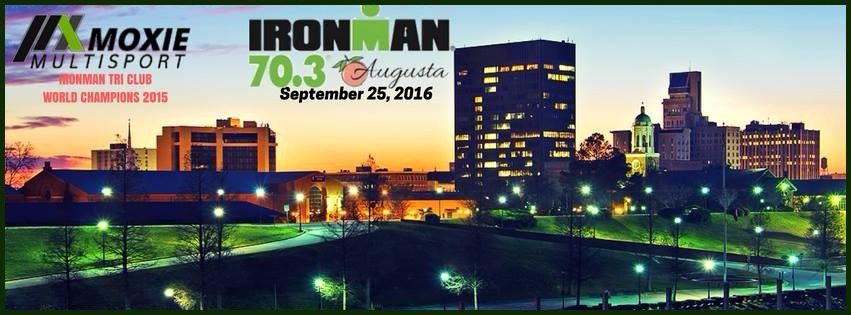
September 25 was going to be my day. The Ironman Augusta 70.3 triathlon was finally here. The race I had been training so hard for on one of my favorite courses. It was four-and-a-half months...
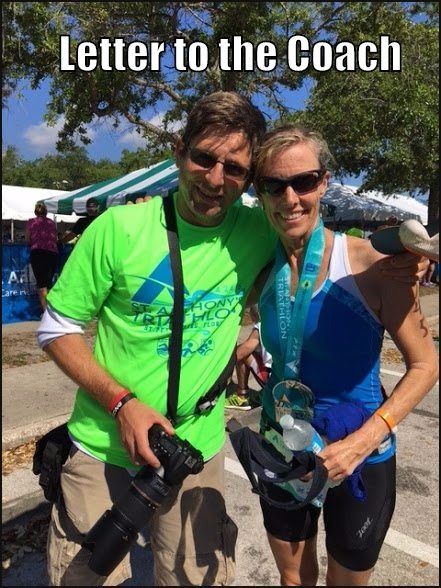
I have been an endurance coach for some time now. Once in a while, I receive an email from a client which chokes me up with pride. Today, I received one of those letters, so instead of sharing it...
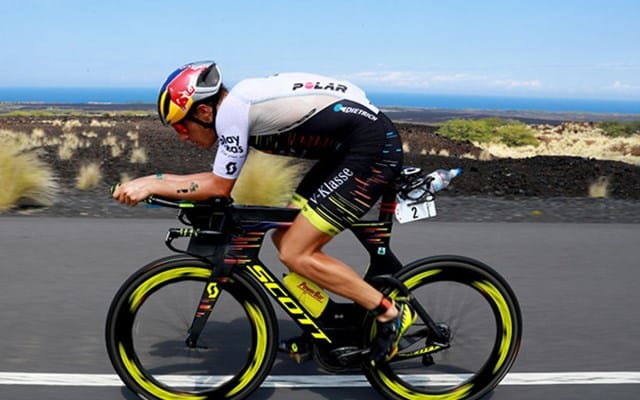
I found when looking for ways to get faster on the bike, is that there is so much information, from different coaches and experts, that it can be confusing and overwhelming. Personally, I...
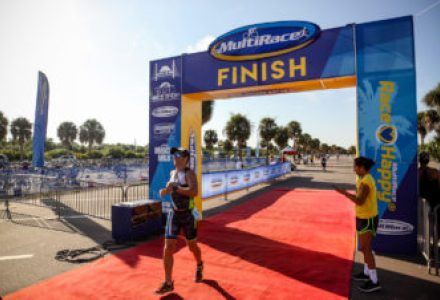
The previous post was a review of the FD3 Triathlon Series as if it was a product. Below you will find a more detailed account of my personal experiences during the race. Let me know in the...
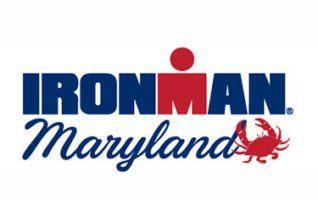
I signed up for Ironman Maryland initially due to the reviews that said it was fast, and beautiful. Jaime started it with all the hype about it being a fast flat bike course because she despises hills, even though most of her fastest bike splits came on hilly courses. Touché. So, last year after a lot of pestering Pete, we registered and the training began. Pete, Jaime and I have been training together for about 4 years, ever since I decided to get serious about triathlon. We ingeniously started calling ourselves “PB&J”. Get it? Peanut Butter and Jelly or Pete, Brad & Jaime.
Interesting enough though, I really wanted a sub 12-hour Ironman and Jaime was shooting for a sub-13, so as much as we enjoy training together we actually ended up going our own ways. I started training at Tribal Multisport with Coach Jon Noland, and Jaime trained with Personal trainer and elite athlete Kenneth Jones.
We made all the arrangements well in advance. We had hotel reservations at the host hotel, restaurant reservations, tri-bike transport was scheduled, flights were booked and cars were rented well in advance.
We talked constantly throughout the months, confirming our plans, comparing training schedules and every once in a while, we actually did get together to train. PB&J looked strong and ready to face IRONMAN Maryland together. Unfortunately, in September, Pete ended up injuring his Achilles’ tendon and after a lot of conjecture decided it wasn’t in the cards for him this year. I told him, it would better to live and race another day than to permanently hurt himself.
We departed for the race on Wednesday, September 30 completely anxious and excited. We headed to Tampa International Airport, for an uneventful flight into Baltimore-Washington Airport. Within a half hour we were in our Jeep Compass rental and headed up Rte 50 in Maryland.
We stopped for a quick lunch at Carmine’s Pizza to carb load with pizza and salad and just as we are about to pull out of our parking space and back into traffic, Jamie’s phone rings. Ed, a friend and first time Ironman athlete, called and tells us the race has been cancelled. I could hear Jamie’s voice say, “Uh say that again…wait…wait. Let me put you on speaker.” A deep Jersey accent comes from her speaker and says “They cancelled the race.” Really? This early.
The last time WTC cancelled a race it was in Lake Tahoe and the athletes were in their wetsuits ready to jump in. They waited that long and now, 3 days before the race they were cancelling it.
We jumped on Facebook, and the IRONMAN Maryland site and were met with the validation that WTC had indeed cancelled the race. It turned out the immediate threat from Hurricane Joaquin was dire and it was in their best interest to keep the athletes, volunteers, race staff and spectators safe. Not to mention, there was already four inches of water already on the course.
We got somewhat lucky. We were able to find a flight home that night, and the hotel did not charge us a night for cancelling so late. Unfortunately, the flight back cost us just as much as the full round trip, and because we pre-paid the car we couldn’t get that back.
WTC anticipated rescheduling but couldn’t give the athletes a final decision until the following Tuesday. The wait was hard. What do you do? Do you keep tapering? Do call it a season? There was nothing to do but wait.
Late Monday night an email hit my account stating that the race was back on and it would be held on October 17th as predicted. All I can think of was “Here we go again.” What if the weather was bad again? Would we spend even more money just to go through another disappointment?
Coach Jon, put a schedule together of low duration, high intensity workouts to keep my body from degrading fitness for the next week, and I managed to squeeze out a 17 mile run with a client that felt awesome the Sunday prior. The weather outlook was good, cold, but decent. As the days passed, the forecast kept getting colder and windier, but no precipitation was even close.
This time it was going to happen.
From Tuesday on, Jamie, myself and another training partner of hers, Hunter, had a group text as we kept planning our trip. We found decent round-trip flights, Hunter found a rental house, and I again reserved a car. Of course this time I bought the trip insurance as well, which, of course, I did not need.

The View from our DC Hotel
And on October 14th, we took off for the second time from Tampa and arrived, this time at National Airport in DC. We spent a great night at the Residence Inn in Pentagon City before heading out to Cambridge the next day.
As I drove though the rural part of Cambridge and into the long drive way of our rental home, I was surprisingly calm. Subconsciously, I think I just didn’t want to get my hopes up, but my heart rate did jump at the surprise I felt pulling into the gravel drive way. It was gorgeous!
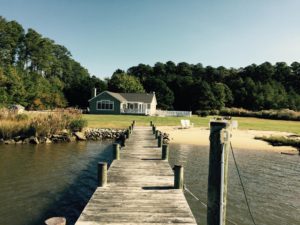
Our Cambridge Ironman HQ
There stood a modest one-story ranch home, but on a huge amount of acreage that backed up to a lake. It had it’s own dock, fire pit, pool, and a beautiful deck. Inside it was an open floor plan with a dining-kitchen area, huge great room and three good size bedrooms. It was decorated modestly, with wood floors and a kind of rural, yet updated and upscale charm to it. All of the appliances were current models in the kitchen and baths with flat screens in each room, and a large one, in the great room, a fireplace and gigantic sectional couch that all of us could have slept on.
What was even luckier was that it wasn’t only Hunter, Jamie and myself, but Kenneth and his parents, so by sharing it, the cost was not even half of what we would have to pay for the hotel.
I also have to say, that Ken’s parents, treated all of us like we were their kids. His Mom, Lucy, cooked and cleaned for us, and his Dad, Phil, grilled, shopped and chauffeured us around to make sure we were at the right place at the right time. It was like Ken, outsourced his parents to us. Of course that wasn’t the case. It seemed like they genuinely loved doing it.
It came time to travel over to transition and pick up our bikes, and then head to Ironman Village to check-in.
We reached transition and since Hunter and Ken already had their bikes, because Ken and his parents drove them up, they headed out to check out the swim start while Jamie and I talked to Tri-bike transport. Jamie’s bike was already in the rack, but unfortunately, mine was not to be found. My stomach took a little turn when Drew, from TBT, said I wasn’t on the list to have my bike at the race.
Luckily, he said that my bike was in the truck, but it was with the bikes that were sectioned off for the athletes that were not going to be returning.
I headed over to the transition area to scope it out and then took a quick peek at the swim start and at that point, my anxiety started to increase. This was happening. There no “ands”, “ifs or “buts”. I was going to be racing my third Ironman.

Ironman village was exactly as it was for every other Ironman and Ironman 70.3 I have raced except, because they were not able to keep all of the original volunteers procured, it was a lot slower checking in. We waited in line for close to two hours before we finally made it under the tent to pick up our packets and swag.
When we finally got through that line, we contemplated going into the Ironman store, but the line to check-out was just as long and we still wanted to get a quick workout in. In every Ironman store I have been in, for every race, the cashiers, (bless their hearts) are always so slow that you know if you do get in that line, it is going to be a lot of time.
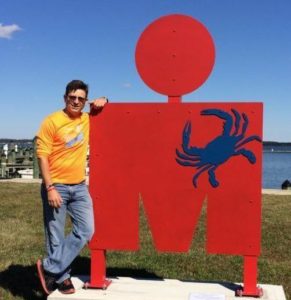
We headed back, and unfortunately, I had yet to receive a call from Drew to tell me that he was able to dig out my bike, so the others headed out on their bikes and I decided I would just work a little while I waited for his call. At 4pm, I did receive the call and 45 minutes later I was back at the house with my bike.
Leading up to the Saturday morning, was pretty much the same as any other long race. Putting gear bags together, going over transition and nutrition plans, and quick workouts in all three events. These were basically just to make sure everything was in working order.

The Goof, Ken, Hunter, Jaime & Ed before a swim workout
Did I mention Thursday night we had a campfire and made s’mores? Yeah, we did that too.
I was pretty shocked at how well I slept Friday night. We had all turned in quite early, in anticipation of not being able to sleep, but I drifted off pretty fast and slept until the 4:00am alarm woke me up. None of us were in a rush as we all felt pretty prepared, and the outside temperature was only in the upper 30s. I dressed, ate and leisurely grabbed my morning bag and we headed out into the darkness.
Leaving the house I had yet to really feel nervous, but as soon as we pulled up to transition, I felt a pressure in my chest. My heart started to beat so hard, I thought it was going to crack through my rib cage and take off on me.
I looked over at Jamie, and she looked back and said,”Sh*t just got real.”
After outfitting my bike with my nutrition and helmet, I took a walk over to the actual swim start line and looked over the water. Waves didn’t seem that bad, but the water was far from calm. I could feel the wind on my skin even through the wetsuit. Luckily, while it was 38 degrees outside, but the water it was 63. That was going to work in our favor, as it was actually going to feel warmer in the water.
Around 6:40, Jamie, Hunter, Ed and I were all hanging out trying to keep warm and maintain a positive mental attitude, when the speaker echoed our announcer’s voice. The safety team had stated that the winds were causing a lot of churning in the water, so the boats and paddle boards could not take their places on the course. The solution was to shorten the course to 1.2 miles.
I should have been really excited about this, as the swim is my weakest event, but I wasn’t. I was actually a little upset not only because I wanted to prove to myself I could get out of the water within my goal, but also for Ed and Hunter as this was their first full distance Ironman.
What else could happen? First they postpone the race, and now they shorten the course. This race just seemed cursed.
That was not the end of the story. Around 7:10, an announcement was made that, the winds had died just a little and would be enough to get most of the swim in. We would do the swim, but we would be about 800 meters short.
Things just looked better. I felt redeemed and a positive relief flowed through me for about half a second. I still had to get passed the swim. If you remember from my post about my last Ironman, I was the last one out of the water to be able to cross the line. I worked a lot harder on my swim this training cycle, now I would have to prove it.
At 7:30 we lined up according to how much time we thought it would take us to swim the full 2.4 miles. I lined up at the behind the 1:30 sign and after waiting another 20 minutes to get through the line, it was my turn to jump in.
The water still frigid enough to shock my body a little, but my adrenaline kept me warm. I immediately headed to the first buoy where we would turn right and then head in triangular pattern.
I felt really good during the first lap. For the first time in an Ironman race I was actually passing people and it felt amazing. I still felt pretty strong as I made the turn for the second lap, but I did slow down a bit.
As much as I thought I loved my long sleeve wet suit, I didn’t have the mobility in my arms, that I developed during training, and I had to strain to lift my arm into a streamline position. I listened to myself hypothesize about it and I thought, “Am I really thinking this? Did I really become a decent enough swimmer to even contemplate it?”
On the second lap, the wind picked up again and I thought I was swimming in my washing machine. I got tossed around and the effort level increased. I did end up breast stroking intermittently for a few minutes to catch my breath and realign my siting, but I continued. My habit of zig zagging didn’t show up until the last straight away while I was trying to sight on the finish. The waves were pushing me in the wrong direction, but my sighting was able to put me back on a good path. I jumped out of the water and ran towards the timing mats, and as I crossed I looked down at my watch – 1:10.
1:10? Really? I had to double check it twice. If I added the 800 meters back on I would have finished around 1:25-1:30 which, was my goal.
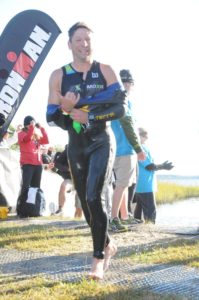
I was so excited I sprinted to the strippers, but for some reason they didn’t help. My wet suit would just not come off of me and when it did, oh man, did I feel the weather. The wind hit me, and my soaked tri kit, like a brick wall.
I headed into the changing tent and dawned a bike kit, arm warmers, a gator neck, and gloves. By the time I added my helmet I looked like a Tri Ninja.

Ed gave us a quick rundown of the bike course the night before, as he came up earlier in the year and actually trained on it. He explained how the course was an oval and we would probably have a head wind on one of the shorter sides and away or back to transition. This would account for two blocks of 12 miles since we had two laps. I was ok with it. I would just turtle for those 24 miles. (This is a technique keeping your head down and allowing your back to come up like a turtle shell to be as aerodynamic as possible.) The rest of it my plan was to stick to 75-80% of my functional threshold power(FTP) as possible. In training that proved to be right around 20 miles per hour which should get me back to transition in 5:35, and then taking account for the wind, sub 6 hours.
No such luck. I have never ever been on a bike course where the majority of the turns were to the right, and kept being hit by the shear force of a 33 mph head wind.
I wish that were the only factor that slowed me down.
I knew because of the temperature that I would not want to drink, but due to the fact my calories were mostly in my bottles, I would have to. What I didn’t count on was that I would have to stop at a portlet every 10-15 miles to urinate. I am just not die-hard enough to urinate while I am on the bike, and we were specifically told that if athletes were caught relieving ourselves outside of designated facilities they would be DQed. That slowed me down.
From mile 40 to 50 we were all riding on the shoulder of the road, into the wind. Directly to the right of the white line were slowing rickets with very small spaces in between them. They seemed a little dangerous, so everyone was either on the right of them, or on the left and swerving to the right when traffic would come from behind.
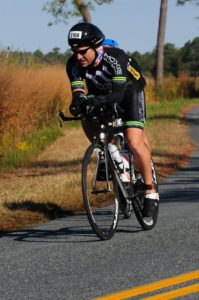
I was in aero, with my head down, when I saw a tire in front of me, so I yelled “On your left.” The wind was so loud the person in front of me, wearing a “This Guy Needs A Beer” jersey, could not hear me. As I slowed down to keep enough bike lengths between us to satisfy the drafting rule, I noticed a motorcycle next to me. It was an official.
He pulls out a memo pad and yells to me, “At the next penalty box, tell them you have blue card.” Well, I wasn’t going to start arguing while I was the bike, so I nodded.
At the mile 56 aid station there was a penalty box, so like a good athlete I did what I was told, and so did the other seven athletes that came in behind me. There we all were. Eight, age group, athletes standing stretching while we waited for our five minutes to be up. I am all for rules, order and safety , but it’s a little ridiculous when there are eight people in the penalty box all caught doing the same thing on the same stretch of road. As this was my 3.4 hour mark on the bike, I asked the volunteer who had to time the penalties how many he had so far. He kind of smirked and said it had to be over one hundred.
At that point I just had to laugh. I got back on my bike and continued trudging through the wind.
Ten miles later, a slow burn started aching my legs. I didn’t understand it. My cadence was up, but no matter how high I shifted, I felt like my effort level was increasing. Then I heard what was a metal grinding. Yep, you guessed it. A flat in my rear tire. These were brand new tubular tires, I had installed just for the race, and now I punctured them. I had a bottle of pit stop in my jersey, so it was only a couple of minutes before I was back on my bike. With Pit Stop, I didn’t even have to take the tire off, just empty the contents of the bottle into the tire and go.
Luckily, I didn’t have to stop nearly as much the second loop as I did the first to urinate, so I picked up a little bit of time, but while keeping to my FTP goals, I could barely get above 17 mph. It felt slow and torturous.
The left turn for the last 12 miles came and I thought maybe we would catch a break and as I passed the last aid station one of the volunteers yelled, “Your on your way back, no more wind!”
He lied.
The whole way back to transition, the wind hit us and kept our pace to a slow 16-17 mph.

As I dismounted my bike, I could feel not feel my toes or my hands, and I was just frigid. I tried to take off my bike gear, and it was extremely difficult. I felt like I did, during the last ironman at mile 13 of the run and I hadn’t even started the run yet.
The grumbles in the changing tent were all the same. The bike was windy, it was tough and it sucked, but it was over. A few of the guys who competed in last year’s event said they were over an hour slower than the previous year. That actually made me feel a little better.
I have a saying I give to my athletes when they start to walk or I find them giving up on themselves. “The mind will quit 100 times before the body does.”
For a nanosecond a thought went through my head. “I already did two of these, I don’t need to prove anything to anybody. Forget this.” Then the next nanosecond went by with my inner dialogue that said “Who are you kidding Minus? You know you are going to finish if you have to crawl across that finish line. You never quit anything in your life, what makes you think your going to do it now?” The last words that echoed in my voice were that of my coach Jon Noland. “Embrace the Suck.”
I changed the best I could with numb fingers and toes and started the run. (I found out later I spent over 20 minutes in T2. It sure didn’t feel that long. I must have taken a nap.)
The first two miles felt a little slow, then at mile three it was like the pearly gates opened up. My legs transitioned into a good running form and I took off. I felt amazing.
I kept to my strategy of walking through the water stops, which during an Ironman is every mile, but they are only a few yards long, unlike those at a major marathon, where the distance could exceed a hundred yards.
At mile seven I actually felt a side stitch which hasn’t happened in a race in years. Luckily, I still had my wits about me. What is the cause, or better yet, what is absent from my body that would possibly cause a stitch? Potassium. Wouldn’t you know it but an aid station was just fifty meters ahead of me, so I grabbed a banana. Within the next quarter mile, the stitch was gone, so I picked up speed again.
The course was two-and-a-half loops that took us from transition through a residential neighborhood, around a park, back through the neighborhood passed transition, into downtown Cambridge where it either started again, or headed to Ironman Village and Finish line.
We had been told that Cambridge was supportive of the race and even in these cold temperatures, the town was out in droves.
Along the route there were kids on their lawns cheering, a dancing banana, residents on lawn chairs, and local bands playing outside their homes. While running through downtown people were outside the bars drinking and cheering every athlete on as they passed. It was just spectacular.
I found Jamie ahead of me around mile 5 and we ended up passing each other three more times. Each time I was getting closer and closer to her. I had hoped to get closer, but in the end she did end up crossing about three minutes ahead of me.
I never ran over 90% of the run during an Ironman before. This time the only time I walked was through water stops and only stopped twice to use the portlet. Granted it was not extremely fast, but it was still over twenty minutes faster than my best Ironman.
My legs at mile twenty were very heavy and this was the half lap and the last time I would have to turn left after downtown Cambridge. I kept going, and didn’t stop but it was getting quite dark to a point where there was a portion of road where I couldn’t see my hand in front of my face. I just kept going.
The thing I just kept thinking in my head was one day, I would finish an Ironman and it would still be daylight.
I came out of downtown Cambridge and made the right towards the chute. I heard the announcer call my name and as I saw the arch of the finish, I wondered if I had it in me.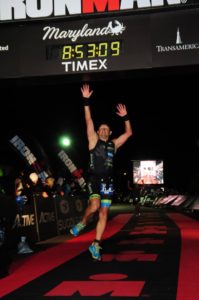
I ran just a little faster and jumped up, caught a little air and touched the arch. I was an Ironman. Again.
My finishing time was 13:08:53 which was actually and hour and forty-six minutes faster than my best Ironman, but if I kept the same pace on the swim, I calculated I would probably have crossed about 20 minutes later which would have given me a ninety minute personal record. In those conditions, I‘ll take it.
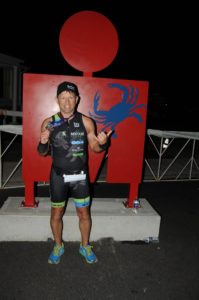
Of course I did not do this alone. I have to thank my coach, Jon Noland for training me (coaches need coaches too), the athletes at Tribal Multisport for pushing me further than I thought possible, the Moxie Multisport team for the help with gear, nutrition, and the support to keep me going through the long training period, my travel and housemates, Jamie, Hunter, and Ken for the great time at the house, and for keeping me sane and laughing, Ken’s parents, Phil & Lucy for the race weekend support, and last but never least, Kim for supporting me at home through this third Ironman.
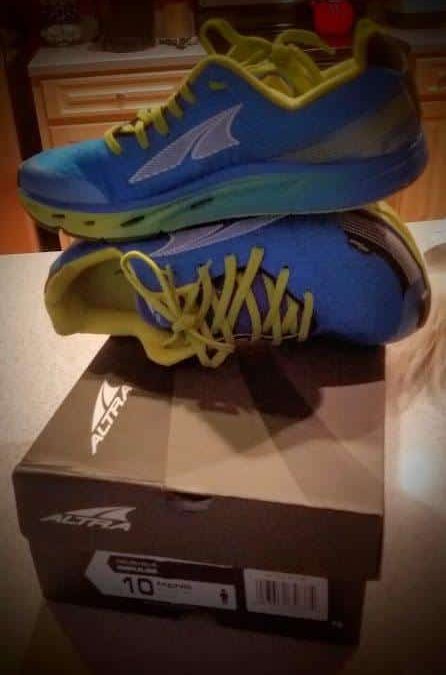

Are you seeing a pattern yet? Yes, I am becoming a huge fan of the 6 year-old running shoe company known as Altra. As I have been instructing clients in form techniques, and have found that most of the models Altra manufactures, lend themselves to my favorite principles.
The Altra Impulse is no different.
As with all of Altra’s models, my favorite advantage is their FootShape™ Toe Box. This is the incomparable wide toe box that Altra is known for. The toe box is makes any of Altra’s models recognizable from a good distance away. That is how wide it is. I enjoy the ability splay my toes and have my feet firmly hit the ground without them being cramped up. Wider toe boxes also allow the feet to develop more strength because the shoe is not tightening around the ball of the foot or the toes. The toes can move around, and tackle all kinds of terrain.
As you can see from the x-ray below, the amount of splay the toes are allowed in the Altra vs a traditional toe box. Imagine having access to the full splay of your foot while you run. What is amazing is that most runners do not even realize the limits that a traditional toe box causes. (Hmm, maybe there is an idea for a full post.)

The Altra Impulse is no different in this department. The FootShape™ toe box has been incorporated and has all the comforts of the other models I have run in.
I love the Zero Drop™ technology that Altra incorporates. When I run I have the ability  to utilize the full power and flexibility of my calf not to mention I can run as if I was barefoot, as our bodies were intended. Most traditional running shoes have a 12mm heel drop. This means that the heel is 12mm above the ball of the foot.
to utilize the full power and flexibility of my calf not to mention I can run as if I was barefoot, as our bodies were intended. Most traditional running shoes have a 12mm heel drop. This means that the heel is 12mm above the ball of the foot.
When we are barefoot, the heel and the ball of the foot are equal which is a Zero Drop™. This also helps with heel striking. Have you ever tried to heel strike while running barefoot? Even if you are a regular heel striker in shoes, it is almost impossible to heel strike while bare foot running. A huge effort has to be made to do that.
So, why runners continue to heel strike? If your heel is more cushioned in the shoe, then of course you will want to hit that area first. (Another post may be needed to explain a little more on this too…stay tuned.)
I love the Innerflex™ which are grooves at the bottom that create a more flexible sole.
One of the huge differences with the Altra Impulse is that they also incorporated their patented StabiliPod™ technology along side the Innerflex™. Now you have a stability shoe that is also somewhat flexible.
I have decided to put this feature as a liked feature more for others than myself. As a pure neutral runner I prefer to work allowing my body to support me, not my shoe, but Altra is marketing this shoe not only for running and triathlon, but for cross training as well.
The StabiliPod™ technology does really help in moving laterally, which is not something that is usual for runners, and especially those of us whom usually stick to the pavement. This is why I do like this feature.
 My absolute favorite feature of this shoe are the drainage holes in the sole. My very last test run with the impulse was an 8 mile run, immediately following a huge rain storm here in Tampa, Florida.
My absolute favorite feature of this shoe are the drainage holes in the sole. My very last test run with the impulse was an 8 mile run, immediately following a huge rain storm here in Tampa, Florida.
My route took me through numerous ankle deep puddles and while my socks remained damp, the shoe was clear of water within a few yards of the puddle. There was no squish from the sole of the shoe or my sock because as my foot pushed down on the shoe, the holes squeezed water out the holes. No more blisters from soaked uppers and water log socks release water as well.
The Altra Impulse also continues with Altra’s A-Bound™/EVA blend compound which sits directly under the foot and adds a return of energy and reduces ground impact.
The upper is a light material and does have a noticeable difference from the other models. The tongue and laces are curved with the shape of the shoe which differs from the straight tongue of traditional running shoes.

I actually enjoyed this new feature. The fit of the shoe felt more comfortable with the tongue falling in the same curve as my foot.
I rarely run without socks, but I did end up having to do go out for a couple of miles one day without socks, and they were extremely comfortable. While the upper is not seamless it is very close. There are only a couple of seems that surround the tongue, but they are covered with a light fabric that helps reduce any friction.
This is probably a very individual issue, but even though I sized up to a 10 from a 9 and a-half, after a few miles my toes still ended up moving forward till I they hit the front of the shoe. This probably has to do with the fact that I only lace my shoes tight enough to lock in my heel.
If you like your shoes laced up tight this probably will not be an issue.
The price point for the Altra Impulse is $120 dollars, which while competitive in the market place it still is a little expensive. In this day and age where people are scrounging for liquidity, I really would like to see at least one company come out with a quality shoe that retails for under $80. Of course that is my opinion and my opinion only.
Quality – 4/5
Upper – 5/5
Outsole – 5/5
Flexibility – 4/5
Comfort –5/5
Appearance – 4/5
Cost – 3/5
Have you ever run in an Altra Running Shoe?
What were your experiences?
Which model do you like best?
Carpe Vitam!
(Seize Life!)
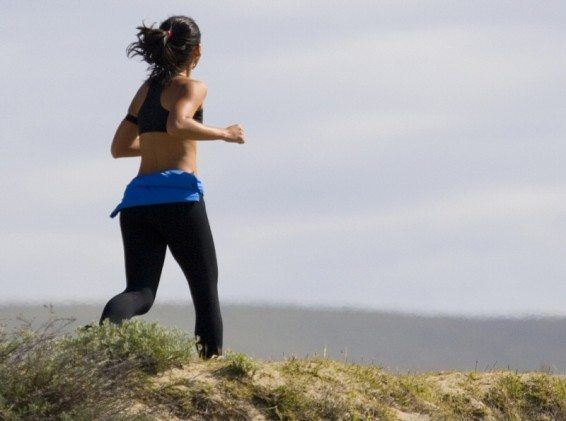
I can hear it now….”Know wonder they call you a Goof…you are crazy.”, “So, if I run slower I will get faster? You are out of your mind.” It was not to long ago I used to think the same thing, but as with everything I post, there are reasons and science to back it up.
Let’s face it, logic would dictate that pushing the pace of your easy days, as close to race pace as possible, would help you get fit faster and help you speed up, right? A lot of coaches, including myself, will tell you to run slow on your easy days, and easy days should be making up anywhere from 50-75% of your weekly mileage.
I have clients continuously asking me, “why are my easy days so slow?” The latest is my famous sit downs with my runners telling them to slow down after examining their data and finding them running tempo speeds during an easy day.
The answer to the question is what Arthur Lydiard and most other coaches would call the aerobic system. The aerobic system, or aerobic development, is the one of the most important fundamentals into unlocking your true potential.
Let us first check the stats on the energy contribution the aerobic system provides for races. As you can in the chart below, even the shorter events like the mile, over 80% of the energy required to run the race is produced via the aerobic system.
Aerobic training is the scientific fact that to move your body at higher intensities, the body needs to break down sugar and convert it to glycogen so it can be used as energy.
The aerobic system plus oxygen starts a chemical reaction known as Aerobic Glycolysis which continuously powers continuous endurance activities. In the aerobic system energy ATP is produced through Pyruvic Acid and Lipid/Protein fragments entering the Kreb Cycle and the Electron Transport Cycle.
Uh…what?
During aerobic respiration (yeah, that’s breathing) the body uses all the oxygen it needs to power the muscles. When you are running in your “aerobic zones” (easy runs), your muscles have enough oxygen to produce all the energy they need to perform.
See? Improving your capacity to transport and efficiently use all the available oxygen to produce energy will enable you to race faster since this makes up 85-99% of the energy needed to race.
Since running easy is aerobic development, what better way is there to train the aerobic system? There is none.
Capillary development – capillaries are the smallest of the body’s blood vessels and they help deliver oxygen and nutrients to the muscle tissues while exporting waste products out. The larger the number of capillaries you have surrounding each muscle fiber, the faster you can transport oxygen and carbohydrates to your muscles.
Aerobic training (easy running) increases the number of capillaries per muscle fiber, thus improving how efficiently you can deliver oxygen and fuel to your working muscles and how quickly they can clear waste products.
Myoglobin is a protein in the muscles that binds the oxygen that enters the muscle fiber. When oxygen becomes limited during intense exercise, myoglobin releases oxygen to the mitochondria to produce more energy.
The more myoglobin you have in the fibers of your muscles, the more oxygen is transported under aerobic stress. Like, uh, during a race. Aerobic training increases the amount of myoglobin you have in your muscle fibers.
Mitochondria are microscopic organelle found in your muscles cells that contribute to the production of ATP (energy). In the presence of oxygen, mitochondria breakdown carbohydrate, fat, and protein into usable energy.
Therefore, the more mitochondria you have, and the greater their density, the more energy you can generate during exercise, which will enable you to run faster and longer.
Aerobic training increases both the number and the size of the mitochondria in your muscle fibers.
Suffice it to say that aerobic development is the single most important factor to long-term development.
Of course, track workouts, VO2 max sessions, tempo runs and cross training will increase your fitness and are still incredibly important to racing faster. However, nothing will help improve continuously like developing the aerobic system.
Aerobic development is dependent upon running in your aerobic zones (for my runners Zones 1-3). This is why running faster on your easy days develop the aerobic system. Once you step out of those aerobic zones, on easy runs you diminish development of your aerobic system, but you also increase the chance for injury. Nope, two negatives do not make a positive in running.
This is one of the single biggest mistakes runners of all experiences make in their training.
As a coach and trainer I have always distinguished myself because I am always able to give my clients and readers the “why”. (Sometimes my clients end up telling me to just shut my mouth. when I am training with them because I am continuously telling them why they are doing each movement of an exercise or workout. I guess it may not be an advantage all the time. Go figure.)
Scientific research has been able to identify how the aerobic system adapts and responds to certain training paces. Physiologically we know:
It is pretty clear now right? Your optimal easy run pace for aerobic development is between 55 and 75 percent of your 5k pace, with the average pace being about 65 percent.
It’s also evident that running faster than 75% of your 5k pace on your long run has very little additional physiological benefit.
In fact, the research indicates that it would be just as advantageous to run slower as it would be to run faster. Running around half of your 5k pace is pretty easy right? Wouldn’t you know it, the evidence is clear that it still provides near optimal aerobic development.
Feel free to let me hear your feedback. I welcome any other case studies, personal experiences and other research as I am always learning. I provide you with the best content I can, but I have an open-mind and know that there may be other research out there that may negate information I post.
~IronGoof
My friend Beth from Discom-BOB-ulated Running posted a great idea for a challenge that she is hosting, so I am informing you of it as well, because I like it.
January seems always to be the month that either athletes are starting their pre-season fitness, are finishing their season or in the middle of their off-season training. If you are in any of those phases motivation can be a factor, so why not wear a different race shirt every day for the month of January. C’mon….it will be fun.
I am personally not lucky enough to have a liberal dress code, but I know that I will be working out at least 20-30 times during the month of January, so I can at least wear a different one each day, plus when just strolling around the house. Most of you can probably do that too right?
Just take a pic every day and post it to a social media site of your choice. Stay motivated and get some wear out of all those race shirts.
In other news, I have been invited to be in a test group for the brand new P90X3 DVD workout system. I have completed the original P90X a couple of times when it first came out and saw some great results. The difference is that the original workouts were sometimes 90 minutes long. P90X3 are short 30 minutes of effort and consist of several types of workouts including, power, agility, speed, isometrics and more. I will be starting the challenge on January 6th, so I hope to be blogging a lot of my experience with it. What will be interesting is that I will continue to be running, biking and swimming on top of these workouts. Whew! I am getting tired just thinking about it.
You too can join the fun with your favorite Goofball (yeah, me) and order it yourself by clicking here.
One last thing don’t forget about the BEST DAMN RACE coming up in Tampa on February 1st and in Orlando on March 1st. This is, without bias, one of the most well run races I have ever been involved with. Both courses are beautiful and with beer included in your very inexpensive race fee, what is there to lose.

One of the scariest things for a beginning triathlete, besides getting in the open water, is cycling. The first image that wandered into my head upon deciding to start seriously bicycling was of a that scary peloton. Those tight formations of bikes moving at ridiculous speeds, during the Tour de France, so close together that one wrong move could cause serious damage to my body or someone else. Scary right? Luckily, triathlon doesn’t allow for huge groups like that, as a matter of fact it isn’t even allowed. Whew!
Buying my first Bike
I didn’t have a lot of money when I first started in triathlon, and I also didn’t really know if I was going to like it. I spent a lot of time in bike stores drooling over the expensive bikes, while studying cheaper entry level bikes. Every bike store had a different angle they played. One would say, purchase the more expensive bike, gain more speed so when I improved I didn’t have to buy another bike. Another would tell me to buy the entry level but load it up with expensive components so I could ride faster, and when I wanted another bike, the components alone would warrant a good price, and of course that store would buy it back from me and give me a discount an another bike. Decisions, decisions what to do, what to do?
I researched different road and tri bikes online and in magazines, and while I was pretty sure I would enjoy triathlon, I decided on an entry level Canondale CAAD 9 road bike. I also included in my purchase, a pair of pedals, cleats, shoes and a helmet. The helmet was very important especially since I hadn’t actually rode a bike in over 10 years. Would I really not forget how to ride a bike? The answer to that my friends is YES. It is not a skill that is forgotten. It maybe a little unsteady the first couple of times, but not forgotten. Luckily I will have my trusty helmet, just in case.
I would enjoy triathlon, I decided on an entry level Canondale CAAD 9 road bike. I also included in my purchase, a pair of pedals, cleats, shoes and a helmet. The helmet was very important especially since I hadn’t actually rode a bike in over 10 years. Would I really not forget how to ride a bike? The answer to that my friends is YES. It is not a skill that is forgotten. It maybe a little unsteady the first couple of times, but not forgotten. Luckily I will have my trusty helmet, just in case.
I also read something that resonated with me. The most important thing that is needed after the purchase of a bike, is the fitting. At first I thought, “what? Don’t I just have to find the most comfortable height of the seat and then get going?” I had no idea that there are so many different adjustments on a bike, to a point that bike “fitters” actually have to be certified in order to properly fit you. They have to take courses, pass tests and be mentored. “Really?”, you ask? Yes…really.
The fitting took about an hour where they put my bike on a trainer, and with my shoes and bike shorts I pedaled, then the fitter took measurements and made adjustments to my seat post raising it and lowering it to a perfect dimension. Then he took angle measurements from the ground to my hip, knee and shoulder and from the pedal and a bunch of other places. He moved my saddle not only up and down by forward and back. He then took my handle bars and put different size spacers on the tube underneath my handlebars to find the perfect height and then was able to move them back and forth to find the right angle, height and most comfortable spot for me. I had no clue there was this much to it.
Pre-First Ride
As I left the store after my fitting, Jo-el, the general manager and friend from my track club, gave me some good advice. I had never rode in cleats and pedals before, where my feet were clipped into the pedals where they wouldn’t just simply lift up. I had to turn my heel so the cleat would unclip from the pedals so I could put my foot down. Jo-el said to take my bike in the house and put it between a doorway, and practice clipping and un-clipping from the pedals. Also, I needed to find the most comfortable side to unclip first and then stick to that side no matter what. I followed that advice in detail. I clipped, unclipped, clipped and unclipped till I was sure I had mastered it. Then I took a little ride around the block and practiced even more till I was confident I mastered at least that part.
I had a feeling of euphoria that first little trip in my neighborhood. I felt fast, free traveling under my own power on this brand new, tuned Cannondale bike. I was really excited for my first ride the next day in the hills of San Antonio.
The First Ride
I drove to San Antonio…Florida that is, with my brand new bike in the back, my new bike shorts on, bottles ready to put in their cages on the bike, coffee in my cup holder and classic rock playing on the radio. I remember having mixed feelings about this initial ride. I had never ridden in a group before, I had never ridden with these cleats and clips before, but I knew I was in good shape but was I fit enough? After that I just thought to myself, “if you cannot go as far then just turn around and head back. no big deal.”.
I met a friend at these ball fields and was mesmerized by the amount of bikers getting ready to take their morning ride. The sea of colors from the different bikes and jerseys was extremely overwhelming. That anxious feeling came back for a second until my friend mentioned we were riding with triathletes not pure cyclists. They would understand I was on my first ride and would help me out. After preparing for my first journey, we found our formation and began the trek.
I was surprised that I was staying in the middle of the pack and with minimal effort. The wind was in my face, I was pedaling under my own power and keeping up! It was an incredibly euphoric feeling. Unfortunately, when we hit the first long hill, euphoria turned to anxiety and then… embarrassment.
My pedaling slowed, and it became extremely hard to mash down on the pedals. With very minimal spinning of my legs I tried to switch to higher gear, but I actually ended up in a lower gear which made it even harder. When I did finally gear up, it was too late. I couldn’t move the pedals fast enough to switch gears, and my chain fell off , so I was at a dead stop. Of course I was so concerned about the gears I didn’t unclip out of my pedals, and I went down on my side. The only thing that really hurt was my ego as I stood my bike up and examined the chain. The group was passing me all asking if I was ok, and taking for granted that I was telling them I was fine and to keep going. By the time I had my chain back on the group was completely out of site. I pedaled like a bat out of hell hoping to catch up, but I missed a turn and ended up 10 miles out of my way, and lost.
To make a long story short ( I know, too late) one of the faster members of the group realized I was gone, backtracked, and finally found me asking directions at a convenience store. He led me back to the group and I finished the ride without any other issues, but I learned a lot of lessons that day.
Hints to get started in cycling straight from the Goof:
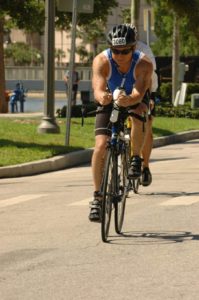
On my first bike after a couple of modifications
1. Buy an entry level road bike. This is usually an aluminum alloy frame. You don’t want a Wal-mart special, but you don’t need to start with the top of the line bike either.
2. Purchase a set of entry level pedals, cleats and shoes. The pedals usually come with the cleats and the bike shop will install them for you.
3. Purchase safety equipment. Biking shorts, and a helmet to start. I would also have a set of sunglasses as well. Not just to keep the sun out of your eyes, but it helps with the wind too. Make sure you also have at least one water bottle with a cage installed on your bike.
4. Get the bike fit for you. Have a certified bike fitter make those adjustments specifically for you.
5. Practice getting in and out of your cleats . Put your bike in a doorway, hold onto the frame and get in and get out of your cleats. Find the most comfortable side of the bike and then practice getting out of the cleats and putting your foot on the ground.
6. Take a short ride around your neighborhood and continue to practice getting in and out of your cleats. When seeing a stop or even a potential stop ahead practice just moving your heel just to the point where you unclip before stopping so you have a quick option that you can pull out of your clip to stop or return your heel to clip back in to keep going. Remember to always clip out and stand with the same foot first every time.
7. Understand your gears. While in that first ride, switch the gears on your right hand and find what lever takes you to a higher or easier gear, and which one brings you to a lower or harder gear.
8. Take your first long ride with friends and have some fun.
One last thing, you are going to fall. That is just the reality of it. You will get stuck in your cleats at some point and you will fall over, but it will be minimal. The trick is to accept it, get up brush yourself off, laugh at yourself, get back on your bike and have fun. It’s worth it I promise.